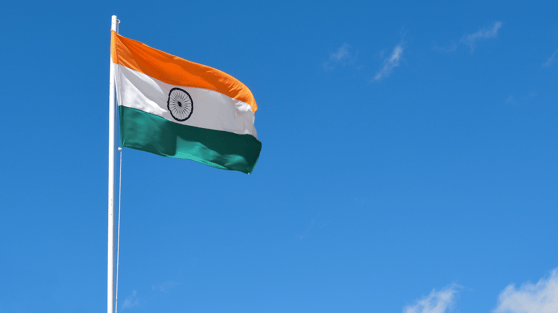Disclaimer: Whatever you hear about India, the opposite is always true.
By Bindu Menon:
When I was asked to write this piece on what Indians can bring to the table at IT firms in Sweden, I realised I knew little about the global IT industry and its perspective on Indians. I spoke to a wide network of Indian friends and family across the globe to hear their views. I read up a lot on the Internet and found a few commonly quoted factors.
I am not an IT person from any angle. I am a complete people person which perhaps explains why I am an expat relocation and intercultural specialist by profession. So, when I thought about how European firms could gain from hiring Indian IT professionals, I looked at it from a human angle and through a cultural lens.
Let me put things in perspective for you. India is the 2nd most populated country in the world. As of December 2020, we were a country of 1.39 billion and counting. This population is spread across 28 states and 8 Union Territories. A country with each state the size and population of a country in Europe. And each state with its unique culture and its own vernacular.
To the world, we might appear to be one – the way we look, speak, dress or behave. But each of the 28 states in India comes with its own cultural dimensions and differences. This is why I insist that you see India as a continent and not a country. And that is why I insist all the more that you must understand its people.
Now for some statistics to build my case forward:
The Youth in India report by the Ministry of Statistics and Programme Implementation of the Government of India states that the median age of Indian population is around 28 years in 2021 and will become 31 years by 2031.
The youth (18-29 years) constitute 22 per cent of India’s population, which is more than 261 million people — larger than the population of one of our neighbouring countries. The proportion of the working-age population is expected to increase from 61% in 2011 to 65% in 2036. “India is adding 12 million people to the working population each year” Union minister for health and family welfare Dr Harsh Vardhan said to the media in February 2021.
Having set the context, let me tell you how bringing in Indians on your team will add colour and creativity. Let us first focus on understanding this huge Indian, employable youth population.
- The youth in India today are a highly driven lot. The majority of this population is from the great Indian middle class.
- They belong to a generation that has inherited the best of genes from their educated and talented parents and in most cases blessed with a sound economic standing to afford good quality education.
- To them, education is the utmost priority, with a bachelor’s degree being the basic qualification.
- They are raised in a highly competitive environment and academic qualification is a tool that earns them respect and recognition in society.
- Science, specifically an Engineering degree is still the most preferred stream of education, with a huge number either picking or being pressurised by their parents to pursue Computer science or related fields of study.
- India is reported to have the largest number of engineers as well as the largest number of engineering education institutes in the world. As of 2021, India annually produces one million engineering graduates, though not all are employable.
- The new areas of interest are AI, Aerospace, Automotive technology, IoT and Cyber security.
- They are highly skilled and eager to add on qualifications that will augment their job opportunities outside India.
- They are inspired by the likes of Sundar Pichai of Google and Satya Nadella of Microsoft whose stories of rising from the middle class armed with education and determination to succeed have taken them to the heights of global recognition.
- For them, education positively means opportunities, opportunities mean money, money means success, and success means recognition. Besides, money is the only thing that buy them happiness and peace, and many times, even love. Paul McCartney can disagree with me. But this is true of developing countries like India.
- English is the main medium of education throughout their academic journey from school to the university level.
- This is why English is also the main language of written and spoken communication at a professional level, though you can’t expect perfect grammar, nor can you hope to comprehend the various accents based on the region they come from.
- An average urban Indian would be familiar with about three Indian languages besides English. Their mother tongue, the language spoken in the state they live in, English which is the first language at school, and the second language which is mandatory, corresponding to their respective state. A third language is also taught in most schools – which might be a foreign language.
- This ability to juggle languages helps them learn a new foreign language with ease. French and German are the two most commonly learnt foreign languages in India, hence a large number of young Indians may take to European languages in no time.
- They have overcome cultural baggage and barriers, moving from one state to another to pursue their studies, or for work. It is much like people from one country in Europe moving to another for higher studies or work.
- It is this exposure that teaches them to be accepting of, adaptable to differences, and open and sensitive to other global cultures.
- They are opinionated, confident of their choices, and inclusive in their approach across aspects that matter in their society.
- Their life revolves around technology, being digitally connected at all times. They are globally aware citizens thanks to their constant connection with social media.
- Their aspirations are all about travelling to work, making money, seeing the world, and living life to its fullest. But, they are also conscious of their responsibilities towards their family, prominently their parents.
- They are what their parents dreamt of becoming. Their life is what their parents sacrificed their pleasures for.
- They come with strong values and stay grounded connecting with their roots and culture.
- They also believe in living life with a purpose and contributing to the betterment of society at large. This belief might also influence the organisation they choose to work in.
- Women are the new workforce to watch out for. The gender gap has been altered significantly, especially in the IT sector, resulting in more women being educated and open to working outside their comfort zones. Marriage still ranks high as a priority, but only second to a job that helps them live with dignity.
With this as the backdrop, picture this diverse population placed in global organisations. Each brings to the table their unique cultural nuances, behaviours, attitudes, aspirations and creative thinking.

The benefits of hiring Indians, due to their agility
Coming from varied cultural backgrounds and with the exposure they have from moving within the country, they make good teammates in multinational organisations. Their ability to acclimatise, learn and respect other cultures is an advantage.
"Indians are flexible by nature and hence more adaptive to change especially given that moving outside India itself is a big change. And, if they have successfully navigated that, they can conquer the challenges with a little time."
They are inherently a hardworking race, and their need to be accepted in a new cultural environment, to prove their mettle, to be recognised for their talent and respected by their peers make them more dedicated to their jobs.
Indians are innately creative and curious. The diversity and cross-cultural nuances that they are exposed to in their everyday lives - from food to festivals, from religion to rituals, from languages to lifestyle - is what helps them think out-of-the-box and approach a task from various angles.
They are used to systems that can fail anytime and let them down. From basic amenities like water, electricity and transport, every day, they know nothing can be taken for granted. This is also one of the key reasons why they are known to face challenges and manage stress or situations more effectively than their western counterparts.
They know how to get around when something goes wrong, think on their feet in times of a crisis and make the best out of what they have on hand.
The famous Indian term `Jugaad’ is a claasic example. Here are a couple of definitions that will make you understand its increasing significance in today’s corporate world and why countries around the world have begun to adopt this Indian philosophy.
Jugaad is “a flexible approach to problem-solving that uses limited resources in an innovative way. It is “an improvised or makeshift solution using scarce resources”. It is a way of life in one part of India, where washing machines are used for whipping up yoghurt. Do take the time to read up about this word that will tell you how and why Indians are innovative.
Indians may come across as shy by nature and refrain from sharing their views in a group/forum. But a little encouragement and a stimulating environment is all they need to bring their culturally diverse perspective to the table and provide innovative solutions.
A good majority of Indians are ‘doers’ and prefer to follow the leader and execute instructions to the T. This is because of the hierarchical society they live in and the way they are expected to follow what the older/more experienced/knowledgeable person spells out. Hence, though they are opinionated, decision-making may not be an innate skill they possess.
However, since Indians are fundamentally intuitive and have a strong sense of logic and reasoning they make ideal team players making an impact with their valuable insights and ideas. Steve Jobs vouches for my views, as he learnt from his first visit to India that
“Intuition is a very powerful thing, more powerful than intellect, in my opinion”.
Let me leave you with a warm Indian thought. India continues to be deeply entrenched in the joint family system which is a key driver of social behaviour. Starting from providing economic and emotional security, this system is what makes Indians more empathetic and understanding, responsible and respectful, tolerant and mindful, shaping democratic thinking, bringing about social cohesion and nurturing strong bonds and solidarity that are invaluable qualities to any organisation.
Bindu Menon
Expat Relocation and Intercultural training specialist
Email: bindu@reloindia.com
Mobile: +919629030008
Bindu is an India expert for global organisations and expats relocating to India.
Having worked with expats from over 20 nationalities and enabling them to understand the business and social culture of India, she is the person to reach out to for pan-India insights and assistance if you are doing business with India or moving to India on short/long term assignments.
Her 15 years of rich experience in the Indian relocation industry, besides a decade plus in advertising and brand communications, has honed her innate ability to connect with people from any culture and at all levels, and with a deep understanding of their needs, empathetically provide them with apt solutions.
Her passion for travel led her to become a writer, speaker/presenter on understanding the culture of India through travel.
She also dabbles in wildlife filmmaking as a local expert, and in the last 3 years, has worked with the BBC, UK, Animal Planet, Canada and Talpa Productions, the Netherlands on a few films.

-1.png)
